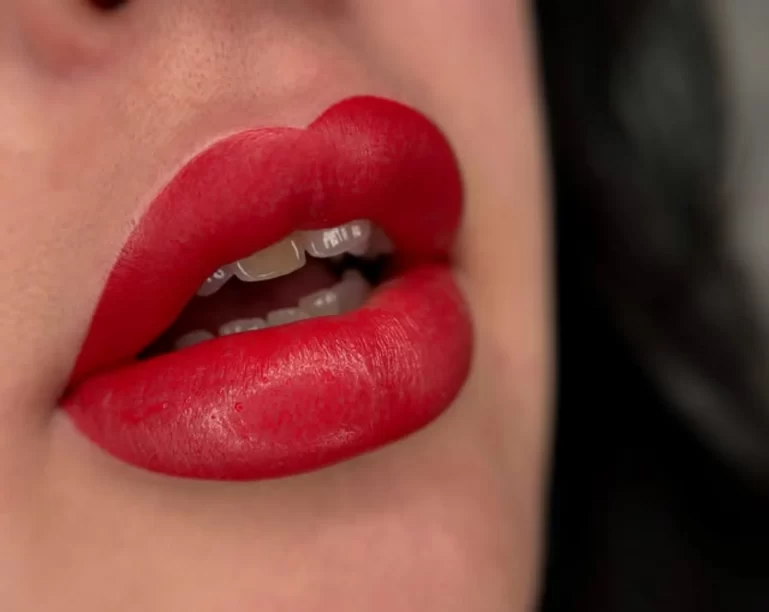
Let’s be real: if you’ve ever gotten a paper cut on your lip, the idea of lip tattooing already makes you cry. That’s why it’s worth asking: What is the pain scale for lip tattoos? This article gets real, with client feedback, salon insight and a little bit of humour. But when done right — with high-quality numbing cream, the right tattoo artist and good prep — the discomfort is surprisingly manageable. In this guide, we’ll break down what to expect during the lip blush tattooing process, where it hurts most and how to make it a little easier on your skin (and your nerves).
Contents
- 1 Sensation Levels Across the Lips
- 2 What Affects the Pain Level During Lip Blushing?
- 3 Client Experiences
- 4 Numbing Cream: Your Best Friend
- 5 How It Compares to Other Cosmetic Tattooing Procedures
- 6 So It Hurts Less
- 7 Healing Process
- 8 Is It Worth It for Fuller Lips and Less Daily Effort?
- 9 Final Thoughts: Choose Confidence Over Fear
- 10 FAQs
Sensation Levels Across the Lips
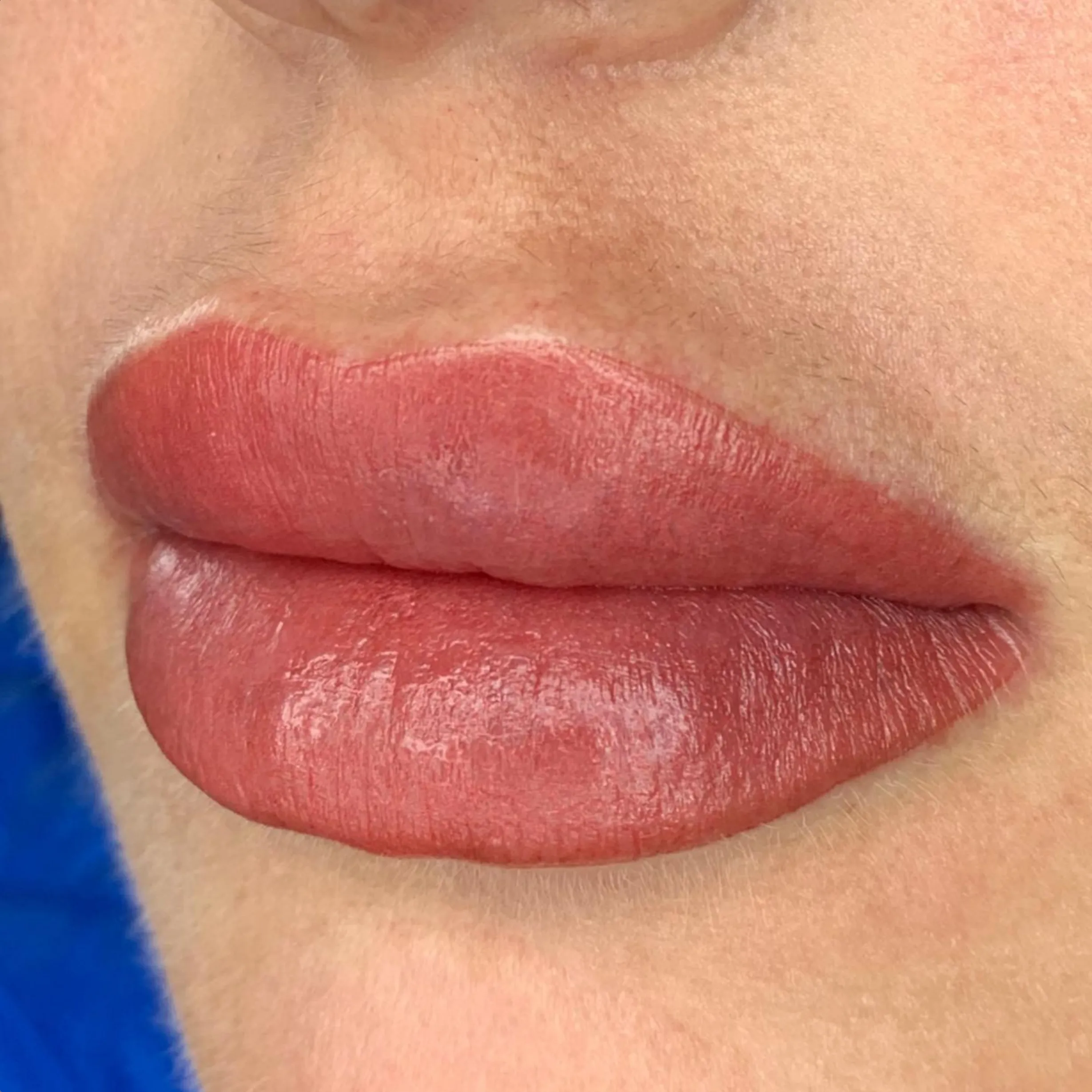
Your lips are sensitive for a reason: they have nerve endings, the skin is thin, and there’s not much between the surface and the underlying bone. That makes them one of the more delicate areas for semi-permanent makeup like lip blushing.
Not sure what to expect from a lip blush tattoo? Here’s how the pain level chart typically looks:
| Lip Area | Sensitivity Level | Common Sensation |
|---|---|---|
| Centre of Lips | Moderate | Tingling, light pressure |
| Lip Line (Vermillion) | High | Sharp, scratchy, more stingy |
| Cupid’s Bow | High | Pinchy, intense but brief |
| Corners of the Mouth | Low to Moderate | Dull ache, mild irritation |
| Inner Lip (if tattooed) | Very High | Sharp, often unpleasant |
Your experience will depend on your skin’s sensitivity, lip fillers, hormonal cycle and whether Face Figurati Cosmetic Tattoo Studio in Melbourne is using proper topical anaesthetics or secondary anesthetic during the tattooing process.
What Affects the Pain Level During Lip Blushing?
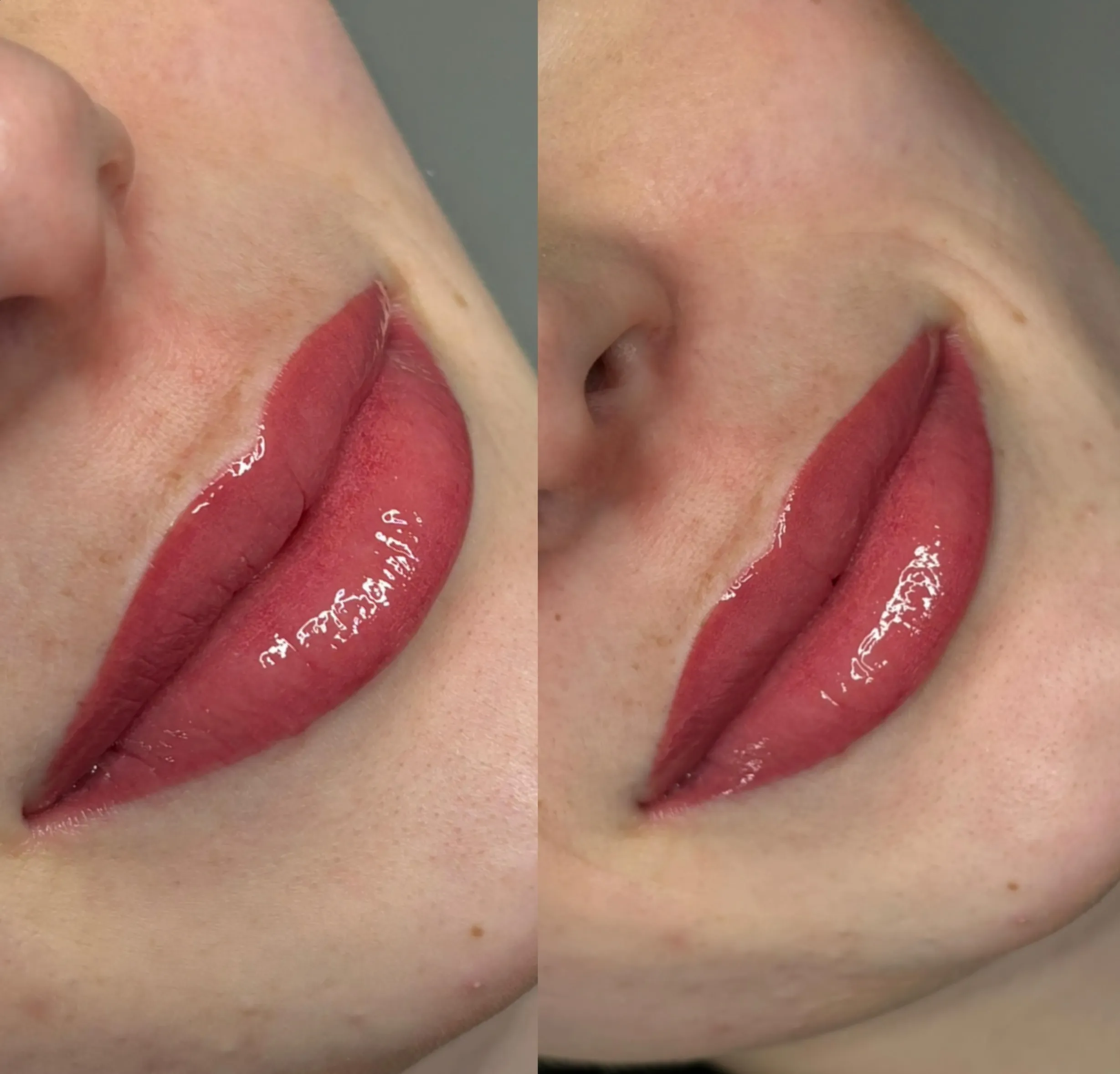
Pain is personal, but there are a few common factors that can turn it up or down during your cosmetic tattoo session. And for anyone looking for lip blushing near me, make sure your artist explains their pain management protocols before you book.
What can make it worse:
- Booking close to your period (increased pain signals)
- Skipping topical anaesthetics or using poor-quality tattoo numbing cream
- Inflamed skin, cold sores, or using strong exfoliating products like chemical peels or Vitamin C serums too soon before the appointment
- Not prepping properly with lip balm and hydration
What makes it more manageable:
- Quality Zensa Numbing Cream or similar products applied in phases
- An experienced cosmetic tattooist using a professional tattoo machine with sterile disposable needles
- Avoiding caffeine, alcohol and blood thinners
- Staying calm — anxiety and fear can heighten your pain perception
Client Experiences
Real talk from real clients — this is how most people describe lip blush tattooing in the chair. It’s also why our lip blush Melbourne clients often recommend starting with a consultation to discuss what to expect for your unique skin.
- “That Was Surprisingly Fine”
With good prep, decent hydration and nerves of steel, some clients barely feel more than a scratch. Pain rating: 2–3/10. Many compare it to lip tint tattooing or a rough exfoliation. - “I Could Handle It, But It Wasn’t Pleasant”
Most people land here. It’s uncomfortable — especially near the lip border — but tolerable. Pain rating: 4–6/10. Often described as a buzzing sting or heated prickles. - “It Hurt More Than I Thought”
This is common if numbing isn’t strong, or if you have compromised skin or active cold sores. Pain rating: 7–8/10. The lip line and cupid’s bow usually feel sharpest.
Numbing Cream: Your Best Friend
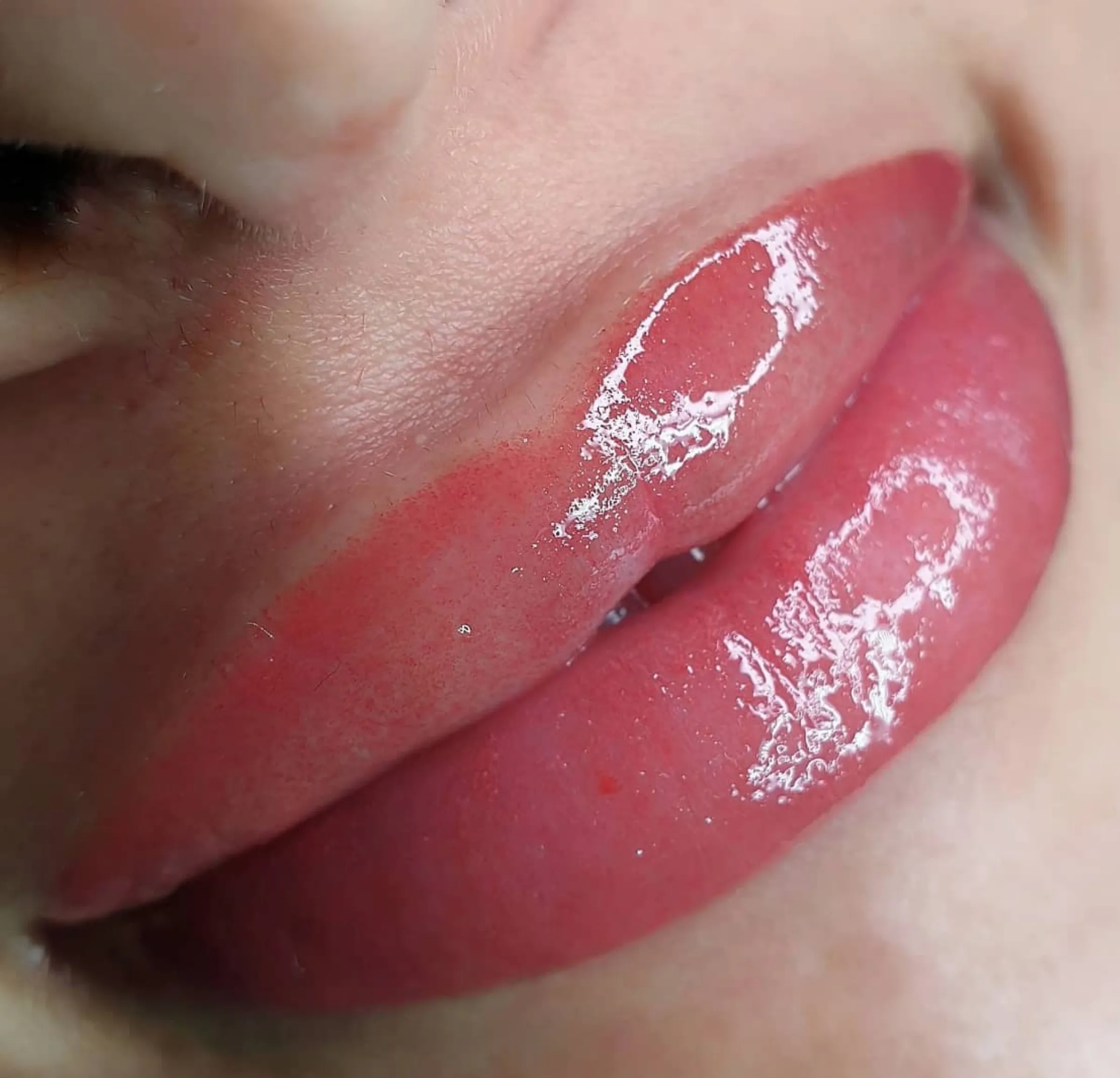
Let’s get this straight: topical anesthesia doesn’t make sensation disappear, but it dulls the pain. Most pros use a two-step approach:
- Pre-numbing: A thick layer of numbing cream like Zensa is applied, then wrapped for 20-30 minutes.
- Secondary anaesthetic: Added during the tattoo process after the skin is broken for deeper numbing.
Pro tips for better numbing:
- Make sure your artist uses pharmaceutical-grade topical anesthetics
- Don’t wipe your lips excessively before your appointment (natural oils help)
- Be honest about your pain tolerance — the artist can adjust machine speed or tattoo placement accordingly
How It Compares to Other Cosmetic Tattooing Procedures
| Treatment Type | Average Pain Rating | Notes |
|---|---|---|
| Eyebrow Tattooing | 2–4 | Feels like pressure or scratching |
| Eyeliner Tattooing | 6–8 | Sharp and intense near lash line |
| Lip Blushing Tattoo | 4–7 | Prickly, stinging at the lip edge |
| Inner Lip Tattoo | 7–9 | Highly sensitive, not for the faint-hearted |
The mechanical needle and the lips’ skin texture can intensify sensation. Plus, areas with more movement (like lips) will feel it more due to constant nerve feedback.
So It Hurts Less
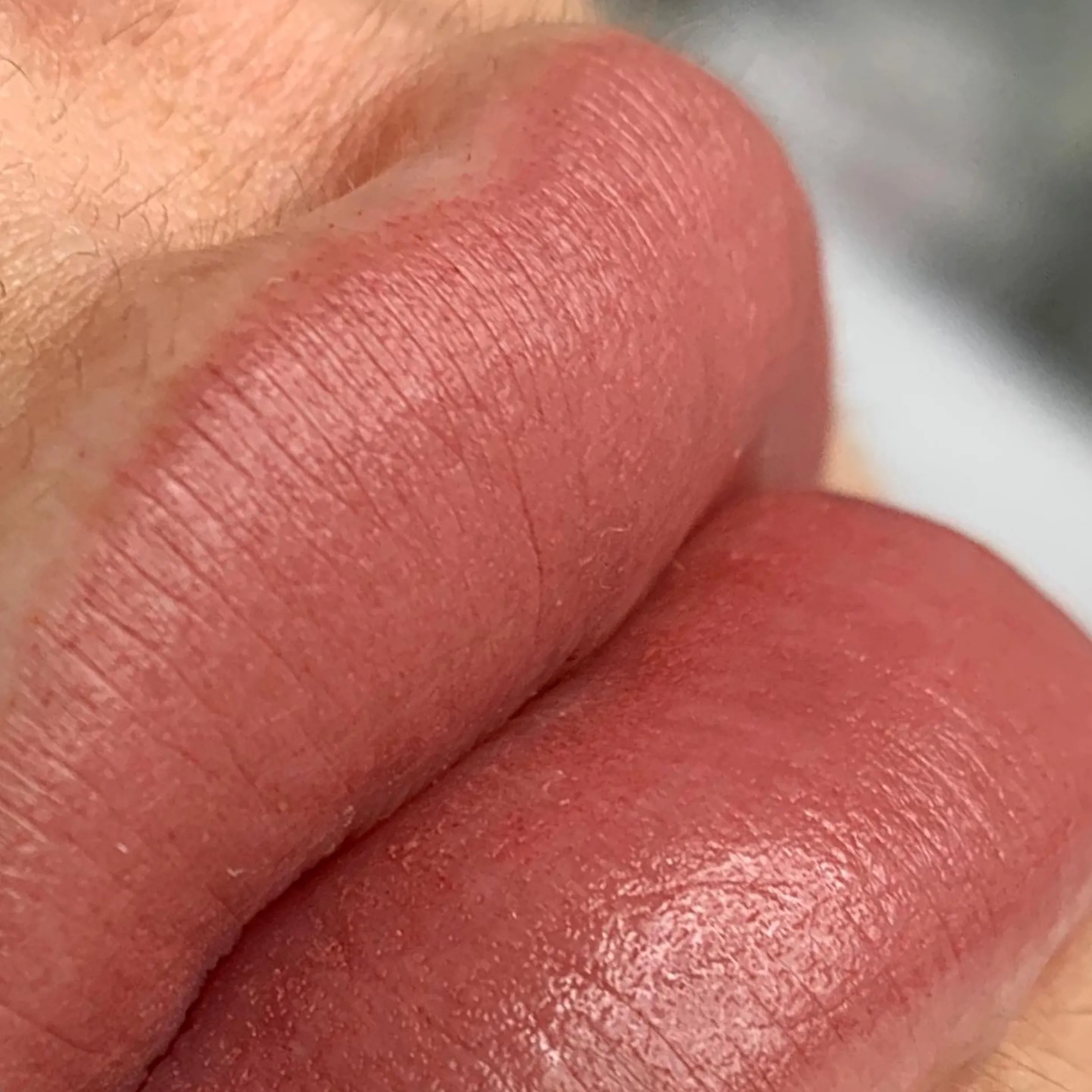
Want to minimise the ouch factor? These steps will help reduce your pain level and increase pigment retention:
- Hydrate: Drink lots of water in the 48 hours prior.
- Moisturise daily with a hydrating lip balm or hyaluronic acid product.
- Gently exfoliate with a sugar scrub (no harsh chemical peels).
- Avoid blood thinners: No alcohol, aspirin or fish oil for 24 hours before.
- Take antiviral meds: If you get cold sores, take cold sore medication as prescribed.
- Don’t do active skincare on the area (no vitamin C serums, acids or retinoids).
- Book with professional artists in tattoo studios and ask about their aftercare protocol.
Healing Process
After the procedure, your lips may feel:
- Sore
- Swollen
- Numb
You’ll see a scabby film forming by day 2–3 — this is normal. Don’t pick or overwash. Use a healing ointment like Bepanthen or your artist’s recommended product.
Full healing takes about 7–10 days on the surface, but the ink settling process takes up to 6 weeks. Don’t judge the final colour or shape until after your touch-up.
Is It Worth It for Fuller Lips and Less Daily Effort?
Lip Blush is for clients who want:
- Fuller lips without injectables
- Balanced shape and colour
- A just-bitten tint that mimics lip gloss or lip staining
- Defined lip liner without the sharp, dated look
It’s not just permanent makeup — it’s an enhancement of your natural tone that stays put through meals, kisses and sweat. Many clients say the payoff of lip blush tattooing is waking up with more confidence and less time spent on makeup.
Final Thoughts: Choose Confidence Over Fear
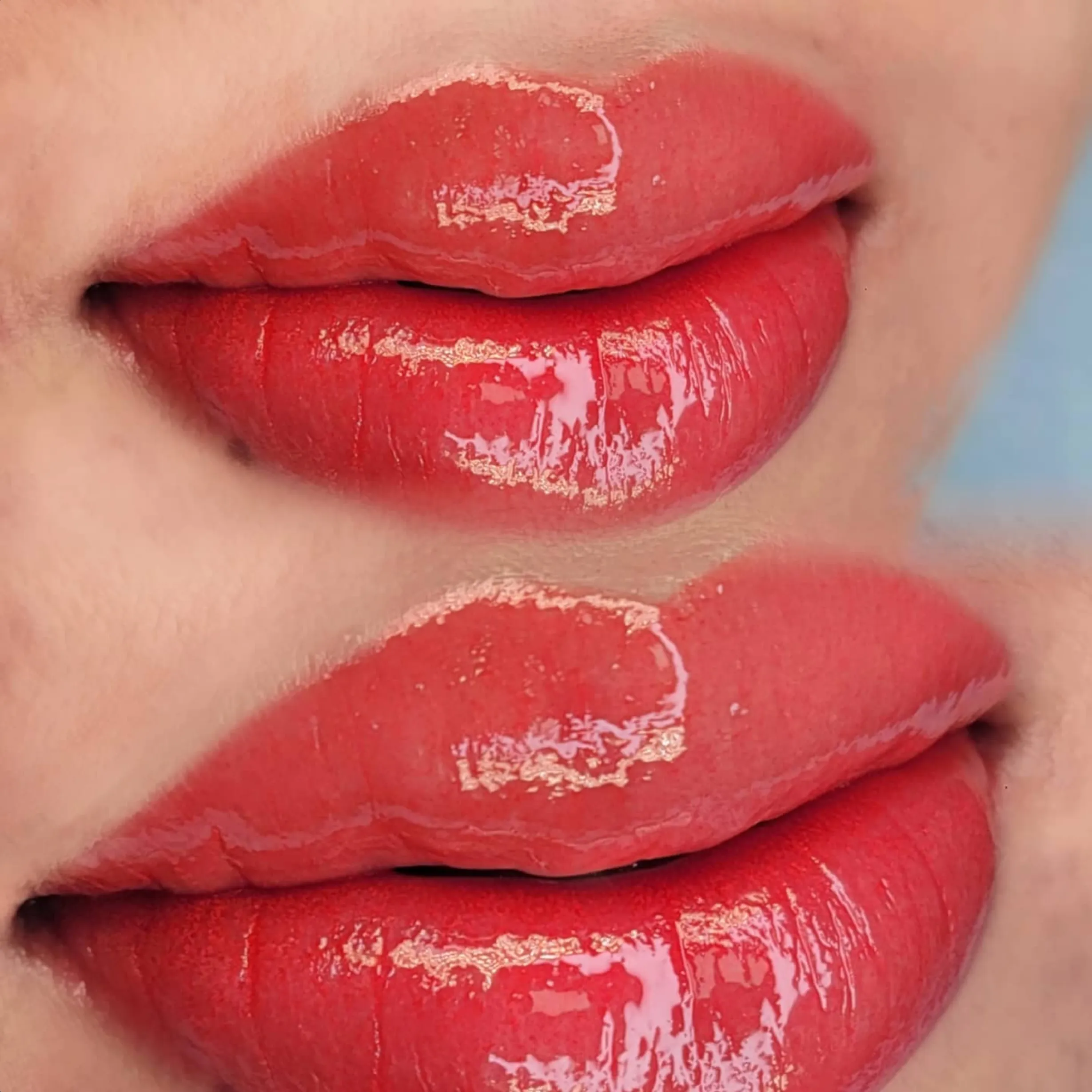
Scared of the pain? Fair enough. But don’t let it be the only factor. When done by a skilled tattoo artist using the right tools and techniques, lip blush tattoo can be a manageable, even empowering experience.
FAQs
How long does Lip Blush pain last?
The pain is mostly during the procedure. After that, it feels like dry, chapped lips for 24-48 hours.
Can I take painkillers before my lip tattoo?
Avoid anything that thins the blood (like aspirin). Paracetamol is generally okay — check with your artist or GP.
Does numbing cream work for Lip Blush tattoos?
Yes! When applied correctly in layers, it dramatically reduces pain signals during lip blushing.
What if I get cold sores?
You’ll need to take a prescribed cold sore medication before and after your appointment. This helps avoid flare-ups that can disrupt healing.
Can I get Lip Blush if I’ve had lip injections?
Yes, but allow 4-6 weeks between lip injections and tattooing for swelling to fully settle. Always disclose to your artist.
